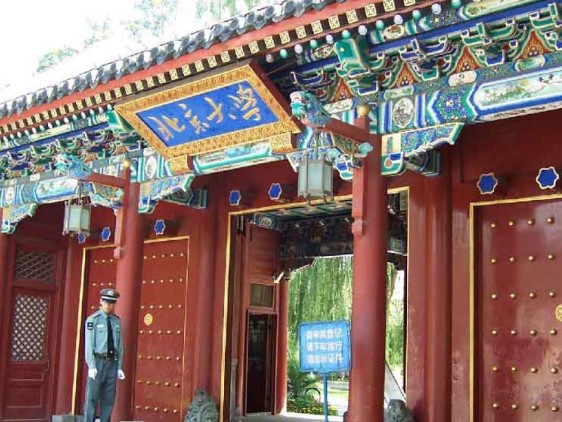
Peking University
By china tour on 2009-12-17 17:12:00 | Beijing Tours
 Peking University, the former Jing Shi Da Xue Tang (the Metropolitan University ) of the Qing Dynasty, opened in December 1898. The Metropolitan University was not only the most prestigious institution of higher learning, but also the highest administrative organization of education in China. In May 1912, the Metropolitan University was renamed "Peking University". In 1917, its presidency was taken up by Mr. Cai Yuanpei, an outstanding scientist, educationist and democratic revolutionary, who played an active role in the reform and development of the university. By 1919, the university developed into the country's largest institution of higher learning, with 14 departments and an enrollment of more than 2,000 students.
Peking University, the former Jing Shi Da Xue Tang (the Metropolitan University ) of the Qing Dynasty, opened in December 1898. The Metropolitan University was not only the most prestigious institution of higher learning, but also the highest administrative organization of education in China. In May 1912, the Metropolitan University was renamed "Peking University". In 1917, its presidency was taken up by Mr. Cai Yuanpei, an outstanding scientist, educationist and democratic revolutionary, who played an active role in the reform and development of the university. By 1919, the university developed into the country's largest institution of higher learning, with 14 departments and an enrollment of more than 2,000 students.
Peking University has a glorious revolutionary tradition. In 1919, the anti-imperialist and anti-feudal May 4th Movement was initiated from the university, which had been the centre of the Chinese New-Culture Movement and the earliest base for the dissemination of Marxism in China . Chen Duxiu, Li Dazhao and Mao Zedong, founders of the Chinese communist Party, as well as Lu Xun, a great writer, thinker and chief leader of the Chinese New-Culture Movement, all either taught or held offices in the university. In order to carry on the revolutionary tradition of the May 4th Movement, the university decided, after the new China was founded, that the 4th of May be set as the date on which to celebrate the anniversary of the founding of the university.
During the War of Resistance Against Japan, Peking University moved to Kunming , a city in Yunnan Province , together with Tsinghua University and Nankai University , formed the National Southwestern Associated University . In 1946, after the victory of the war, Peking University moved back to Beiping (then the name of Beijing ). At that time, the university comprised six schools (Arts, Science, Law, Medicine, Engineering and Agriculture), and a research institute for the humanities. The total enrollment of student grew to 3,000.
After the founding of the People's Republic of China, the government carried out, in 1952, a nationwide readjustment of colleges and universities with the aim to promote higher education and quicken the training of personnel with specialized knowledge and skill by pooling the country's manpower and material resourses. After the readjustment, Peking University became a university comprising departments of both liberal Arts and Sciences and emphasizing the teaching and research of basic sciences. By 1962, the total enrollment grew to 10,671 undergraduate students and 280 graduate students. Since 1949, Peking University has trained for the country 73,000 undergraduates and specialty students, 10,000 postgraduates and 20,000 adult-education students, and many of them have become the backbones on all fronts in China. At present, Peking University has 216 research institutes and research centers, and there are 2 national engineering research centers, 81 key national disciplines, 12 national key laboratories. It is a comprehensive and National key university. The campus, known as "Yan Yuan" -- the gardens of Yan, is situated at the northeast of the Haidian District at the western suburbs of Beijing . It stands near the Yuan Ming Gardens and the Summer Palace.
Booking Procedures | Terms & Conditions | Payment Methods | Links | Site Map | About Us | Contact Us | Travel Agent
Copyright 2008, All rights reserved.. itourbeijing.com professional Beijing tour operator and China travel service
TEL: 86-10-85711972 (Universal) 1-888-288-9328 (North America) E-mail: contact@itourbeijng.com
Tours Index | China Tours | Beijing Tours | Xi'an Tours | Shanghai Tours | Guilin Tours | Tibet Tours
China Travel | Beijing Travel | Shanghai Travel | Xi'an Travel | Guilin Travel |The Great Wall Tours
China Golf | Beijing Golf | Shanghai Golf | Xiamen Golf | Beijing Map | Beijing Side Trip | Yangtze Cruise | Travel Picture

